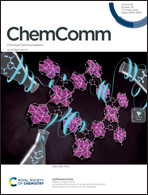Electrocatalyst design for the conversion of energy molecules: electronic state modulation and mass transport regulation
Abstract
Electrocatalytic conversions of energy molecules are involved in many energy conversion processes. Improving the activity of electrocatalysts is critical for increasing the efficiency of these energy conversion processes. However, the tailored design of highly active electrocatalysts for practical applications remains challenging. In this regard, we present an overview of the general design principles for efficient electrocatalysts and application of these principles in different electrocatalytic processes. Specifically, enhancing the intrinsic activity of electrocatalysts by electronic state modulation through heteroatom doping, vacancy introduction, interfacial electronic transfer and strain engineering is introduced. In addition, improving the apparent performance of electrocatalysts by mass transport regulation, which is realized by morphological and wettability control, is also discussed. Finally, enlightenment from these studies is summarized and perspectives for the future development of electrocatalysts are provided. The important progress highlighted in this work will provide solid foundations for the tailored design of electrocatalysts toward practical applications.



 Please wait while we load your content...
Please wait while we load your content...